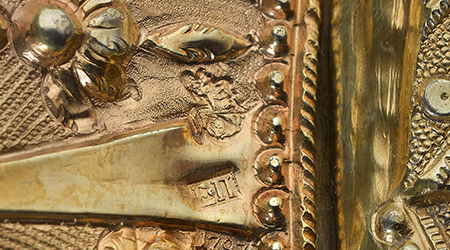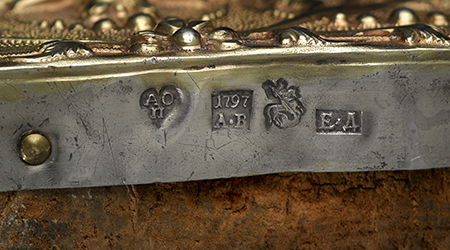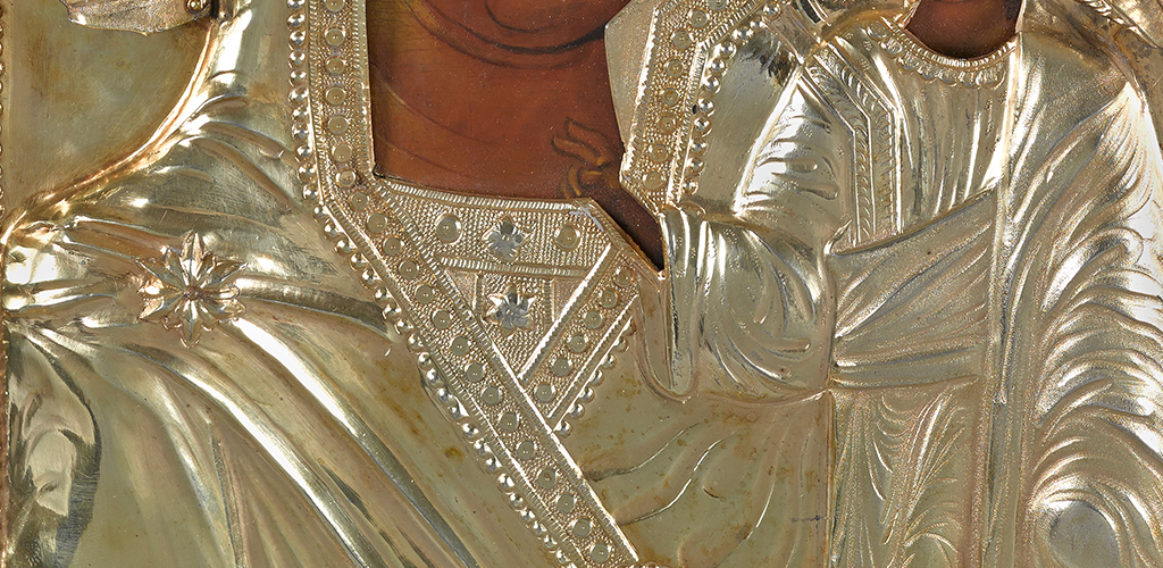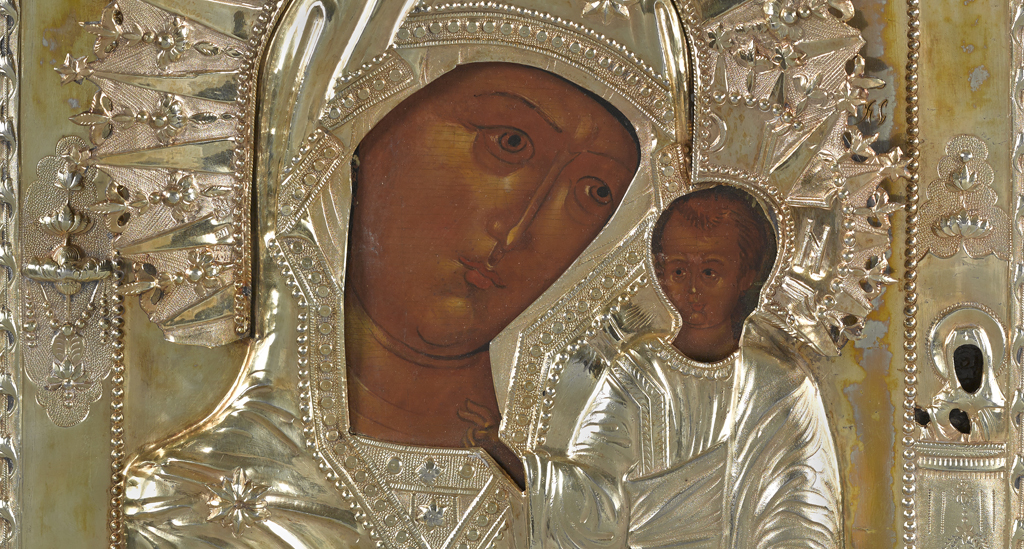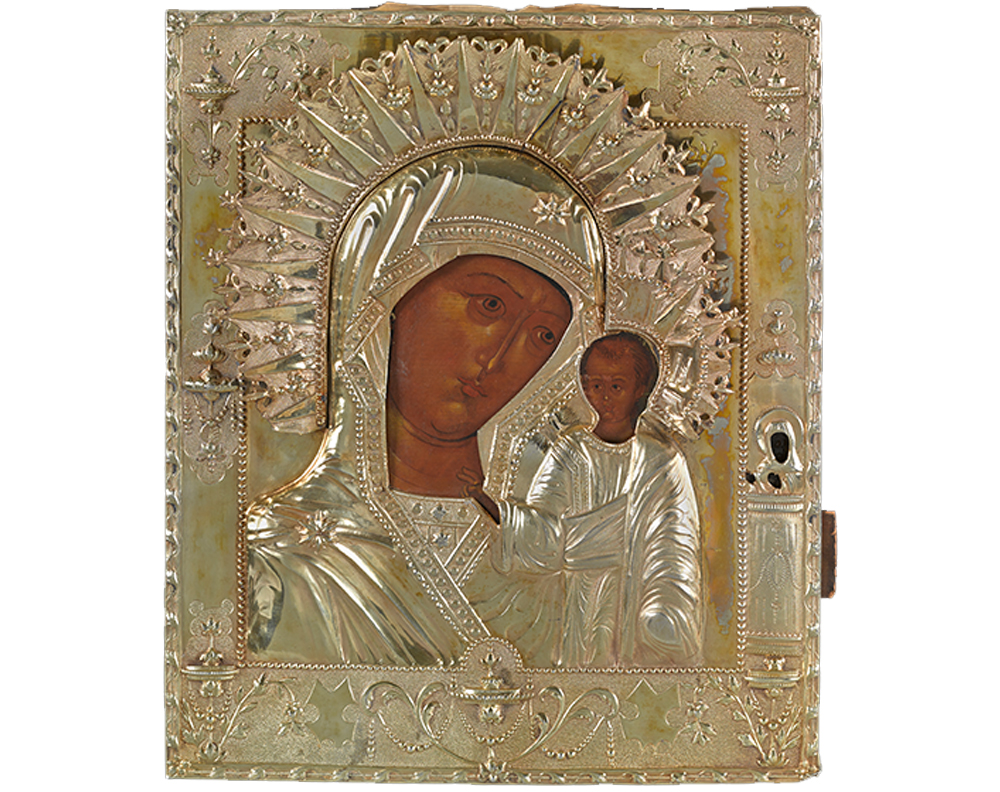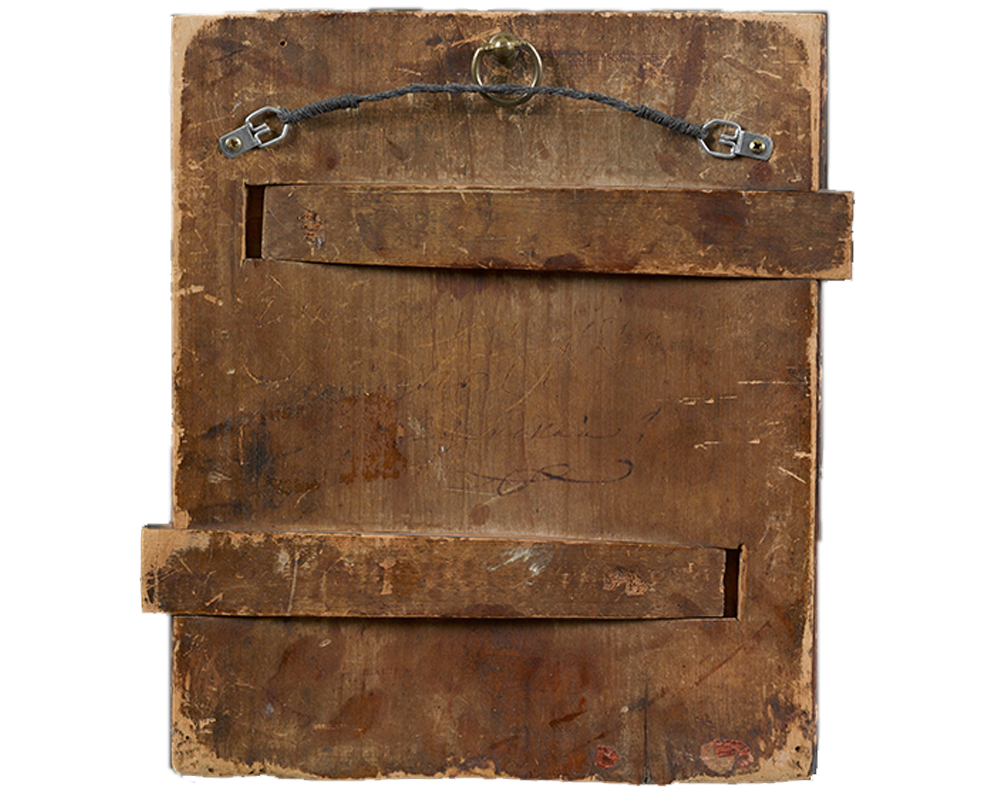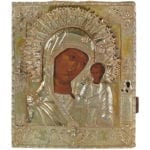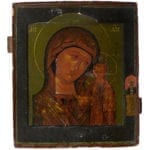The icon is painted in the traditional manner against a dark olive-green background. The Mother of God is depicted tilting her head towards her son standing upright at her side and blessing her with his right hand. Both wear ochre vestments highlighted with gold. On the right border of the icon is an image of a male family saint. The icon is encased in a silver-gilt oklad engraved with foliate motif and mounted with a large similarly decorated halo with a pierced ornament.
The Mother of God of Kazan, a variant of the Greek Hodegetria, is one of the oldest and most venerated images in Orthodox Christianity. The icon of the Mother of God of Kazan is celebrated on July 8th and October 22nd, commemorating its apparition in 1579 in the city of Kazan – formerly the capital of the Tatars – shortly after the city had been conquered by Tsar Ivan IV “The Terrible”
According to the tradition, the icon was discovered by a child, Matrona. It was said that the Virgin Mary herself, in an apparition, revealed the object’s underground location to the girl. The original icon was kept in the Theotokos Monastery of Kazan, which was specially built to commemorate the spot where it was found.
